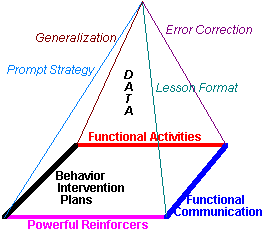 |
 |
 ricerca
nel sito ricerca
nel sito
motori di rierca
|
 |
 |
|
|
 |
|
documenti nella sezione
|
 |
|
|
|
acquisizione
del linguaggio nei bambini autistici: cosa ci puņ dire?
(cash j. r., 1989)
come aiutare
un bambino con disturbo dello spettro autistico a svolgere
i compiti a casa?
(mona a., 2001)
comprensione degli
studenti con sindrome di asperger, direttive per gli insegnanti
(williams k., 1995)
excursus
storico sulla comunicazione facilitata
(cenciarelli i., mona a., 1999)
il parent
training razionale-emotivo per genitori di bambini difficili
(di pietro m.)
il programma
teacch
(arduino g. m.)
il self-management
(edelson s. m.)
informazioni
base sull'auditory integration training
(edelson s. m.)
interventi
terapeutici: modello comportamentale
(cenciarelli i., mona a., 1999)
interventi
terapeutici: modello organicista
(cenciarelli i., mona a., 1999)
interventi
terapeutici: modello psicodinamico
(cenciarelli i., mona a., 1999)
interventi
terapeutici: modello sistemico-relazionale
(cenciarelli i., mona a., 1999)
l'eit:
analisi di due casi
(lucioni r., pervenuto alla bma il 23-06-2001)
la vitamina
c nella prevenzione e trattamento dell'autismo
(rimland b., 1999)
modelli
di musicoteraia per l'autismo
(cenciarelli, mona, de rubeis, botta, 2002)
musicoterapia e autismo
- abstract
(cremaschi trovesi g., 1999)
pecs,
pyramid approach of education
(dal sito www.pecs.com)
prevenzione
(gruppo di lavoro tecnico-scientifico sulla sindrome autistica
della regione lombardia, a cura di cenciarelli i., 1999)
progetto
iem
(guazzo g. m., aliperta d. pervenuto alla bma il 12-11-2000)
sindrome
dell'X fragile e autismo
(dagli atti del convegno scientifico internazionale, 1990;
a cura di cenciarelli i., 1999)
trattamenti nei
disturbi generalizzati dello sviluppo - abstract
(marando r.)
un approccio
musicoterapeutico alla sindrome autistica
(lubrano m. l., picconi c., polcaro f., pervenuto agli argonauti
il 29-11-2000)
|
|
|
 |
|
indietro
| inizio
|
 |
|
PECS, PYRAMID APPROACH OF EDUCATION
The Pyramid Approach to Education is a unique teaching method that
establishes effective learning environments for children and adults
with autism or related developmental disabilities and severe learning
impairments. Created by Dr. Andrew Bondy, this system
offers sound principles for those who teach, whether in a classroom
or at home.
The Pyramid Approach is based on two different types of learning
elements: structural and instructional. Through the use of
applied behavior analysis, this method provides the foundation for
a positive environment for growth. Structural elements focus
on functional activities and communication, powerful reinforcers,
and behavior intervention plans. These elements form the base of
the Pyramid Approach, creating the necessary positive setting
that will foster learning. Instructional elements include
lesson formats, prompt strategies, error correction strategies (uniquely
developed and suited to specific prompting strategies), and generalization.
All elements involve data-based decision making. When all of the
elements of the educational pyramid are combined, this system results
in success in a broad array of settings.
Dr. Bondy developed this system of teaching after years of working
with children and adults with autism and related developmental disabilities.
It is a very systematic program that allows educators to individualize
each child's learning environment to reach maximum benefits.
It is one of the few approaches that encourage creativity and innovation
on the teacher's part, and utilizes a broad spectrum of behavior
analysis principles. The Pyramid offers a unique blend of applied
behavior analysis and an emphasis upon the development of functional
communication skills, regardless of communication modality.
The Pyramid emphasizes how to teach, rather than simply what to
teach.
fig. 1: The Pyramid Approach of Education
(from web site http://www.pecs.com)

|
